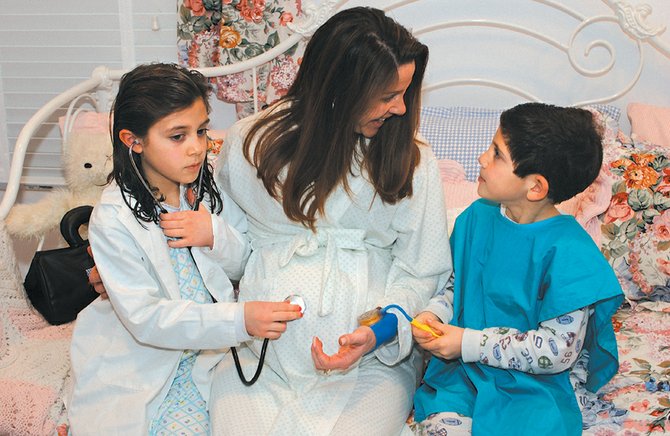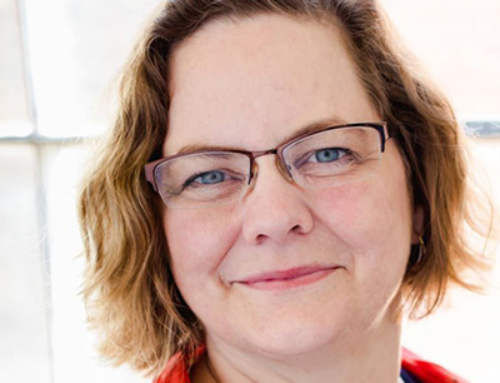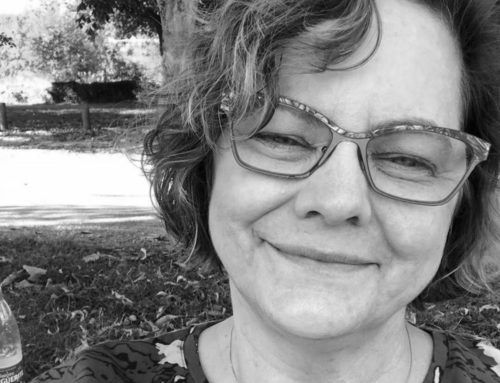Domestic delivery
More local moms are choosing at-home birth, and a growing number of Capital District midwifery practices are there to help
While the numbers are still somewhat low in the United States, home birth has begun to increase in popularity in recent years. The Centers for Disease Control (CDC) report there was a 29 percent increase in the number of home births in the United States between 2004 and 2009.
Twenty-eight weeks into her pregnancy, Chrissie Morrison walked out of her OB/GYN’s office feeling frustrated and disappointed.
#Pregnant with her second child, the 30-year-old mom from Mechanicville just learned that her 5-year-old son wasn’t going to be allowed to visit the hospital when his sister was born. It was November 2009 at the height of the H1N1 flu epidemic, and the hospital didn’t want to risk spreading the virus despite the fact that Morrison’s son had no signs of the flu.
“They told me ‘kids are a ball of germs’ basically,” Morrison says.
Morrison was told it was a “Capital Region-wide policy,” and so she felt the need to look into other birthing options. After some consideration, she made the decision to give birth to her second child at home with a certified nurse midwife.
“I said I have done this before; I know what I’m doing. I know I can handle it, and it will just be at home instead of the hospital,” she says.
Morrison is part of a small but growing trend. While the numbers are still somewhat low in the United States, home birth has begun to increase in popularity in recent years. The Centers for Disease Control (CDC) report there was a 29 percent increase in the number of home births in the United States between 2004 and 2009.
In January, midwife Michelle Doyle, welcomed baby number 100 to the world since opening her Troy midwifery practice, Local Care Midwifery, in 2009. Doyle, who previously attended hospital births as a midwife for many years, says just looking at the increase in midwives becoming licensed in the Capital District is good evidence the numbers have gone up locally.
“When I started my practice almost four years ago, I was the first licensed midwife to set up shop. There were home births happening, but they were with practices that were coming up here from New Paltz or Hudson,” she says. “There are now six practices doing home birth services.”
Doyle says she believes women are choosing home birth for a number of reasons. More women are deciding they want to call the shots and be more in control of their births. Others were unhappy with a previous experience in a hospital, and some just like the idea of the comfort of home.
“In the hospital, I felt like I had no control over my own birth. I felt like I was told what to do and was on their time schedule. If I needed something, it was an inconvenience for them,” Kendra Hennessey says.
When Hennessey of Ballston Spa learned she was expecting her second child, she came across information about home birth. Hennessey says the more research she did, the more she realized this was an option a lot of women were deciding on and felt it warranted meeting with a midwife.
“If you told me two years ago that I would be having a baby at home, I probably would have told you, you were nuts,” Hennessey says. “It sounded like something only hippies did and didn’t sound like me.”
In January 2013 Hennessey’s second child was born in her home surrounded by family, and she says she has no regrets.
“I would choose home birth again. I would never go back to a hospital again if I didn’t have to,” she says.
“I loved the idea of having as many people as I wanted here. That is regulated in the hospital,” Hennessey says. “I liked the idea of being home after birth – not having to go anywhere for a week if I didn’t want to, and just the comfort of giving birth in the position I wanted and in the room I wanted appealed to me.”
Like Morrison and Hennessey, Chrissie Hotaling made the decision to go with a home birth after delivering her first child in a hospital. Hotaling’s hospital experience left her with a cold, uneasy feeling.
“I was rushed through my labor, was given a lot of Pitocin (a labor-inducing drug) and ended up hyperventilating,” she says.
“If you told me two years ago that I would be having a baby at home, I probably would have told you, you were nuts. It sounded like something only hippies did and didn’t sound like me.”
– Ballston Spa mom Kendra Hennessey
Hotaling describes her second child’s birth at home as “magical.”
“The quality of care was above and beyond anything I could have dreamed about,” says Hotaling. “It was totally different than having someone go, ‘OK, hold your breath and push until you can’t hold it any longer.’ When first entering my house, my midwife sat next to me on the couch, rubbed my face, pushed the hair out of my face, rubbed my arm and told me I was doing a great job. She was just very attentive and very personal.”
Home birth isn’t for everyone. Doyle says generally a woman who is a candidate to birth safely at a local community hospital is also a good candidate for a home birth.
“Someone who is a serious diabetic on insulin or someone having triplets is not a good candidate to have a baby for instance at St. Mary’s Hospital – it’s a much better idea for them to be at St. Peter’s Hospital or Albany Medical Center,” she says.
However, even in a pregnancy considered healthy, complications can still arise. In fact, Morrison says her husband needed some convincing to go the home birth route because he was worried about complications.
“He was concerned with, God forbid, something should go wrong – when does Michelle pull the plug and say, ‘Let’s just go to the hospital,’” Morrison says.
Dr. Marla Eglowstein, a former high-risk obstetrician in Albany, says although most home births with a well-trained midwife are safe, it’s important for midwives to keep a close eye on the situation and not hesitate to transfer care to the hospital at any sign of a problem.
“You have to be well prepared and willing to change your plans, but the same is true in a hospital birth too,” Eglowstein says. “Things happen both in and out of the hospital that are unpredictable.”
Eglowstein is a big believer in the importance of patient comfort in pregnancy, labor and delivery both physically and emotionally.
“I think a person does need the comfort of feeling in control and knowing what is gong to happen, and the comfort of their provider being with them as much as possible,” she says. “I think that is all very important and influential on the labor process, and people labor best and the most efficiently when they are at ease with what’s happening.”
Eglowstein thinks this level of comfort is possible in a hospital as well and should be encouraged.
“I have the philosophy that we should be making hospital births as comfortable as we can to support people’s wishes. That’s why we have things like birth rooms, beds that come apart and unobtrusive monitoring,” she says. “This is why all of those things have been developed so we can make people at least somewhat as comfortable as home and still have the advantages of being in the hospital.”
Collaboration between midwives and hospitals is also important for good patient care, says Eglowstein.
“We should continue to give women choices and give support without saying you are crazy either way – hospital or home,” she says. “I would like us all to understand each other better – physicians and midwives. I believe it’s time to reframe this conversation. Midwives and obstetricians have been debating the safety of home birth for far too long.”
Eglowstein says what it comes down to is as long as the woman is healthy; it is important for her to decide what is best for her and be supported in her decision home or hospital.
For Morrison, the choice of a home birth was the best decision she and her husband made. Her daughter, Kiley, was welcomed into the world with her big brother smiling ear-to-ear by her side.
“He was one of the first people to get to hold her and that was just so precious to me,” Morrison says.
Morrison says after discussing her husband’s concerns with her midwife, she felt confident that Doyle (her midwife) was fully prepared to handle any situation and willing to let a physician handle the situation if there was an emergency.





Leave a Reply